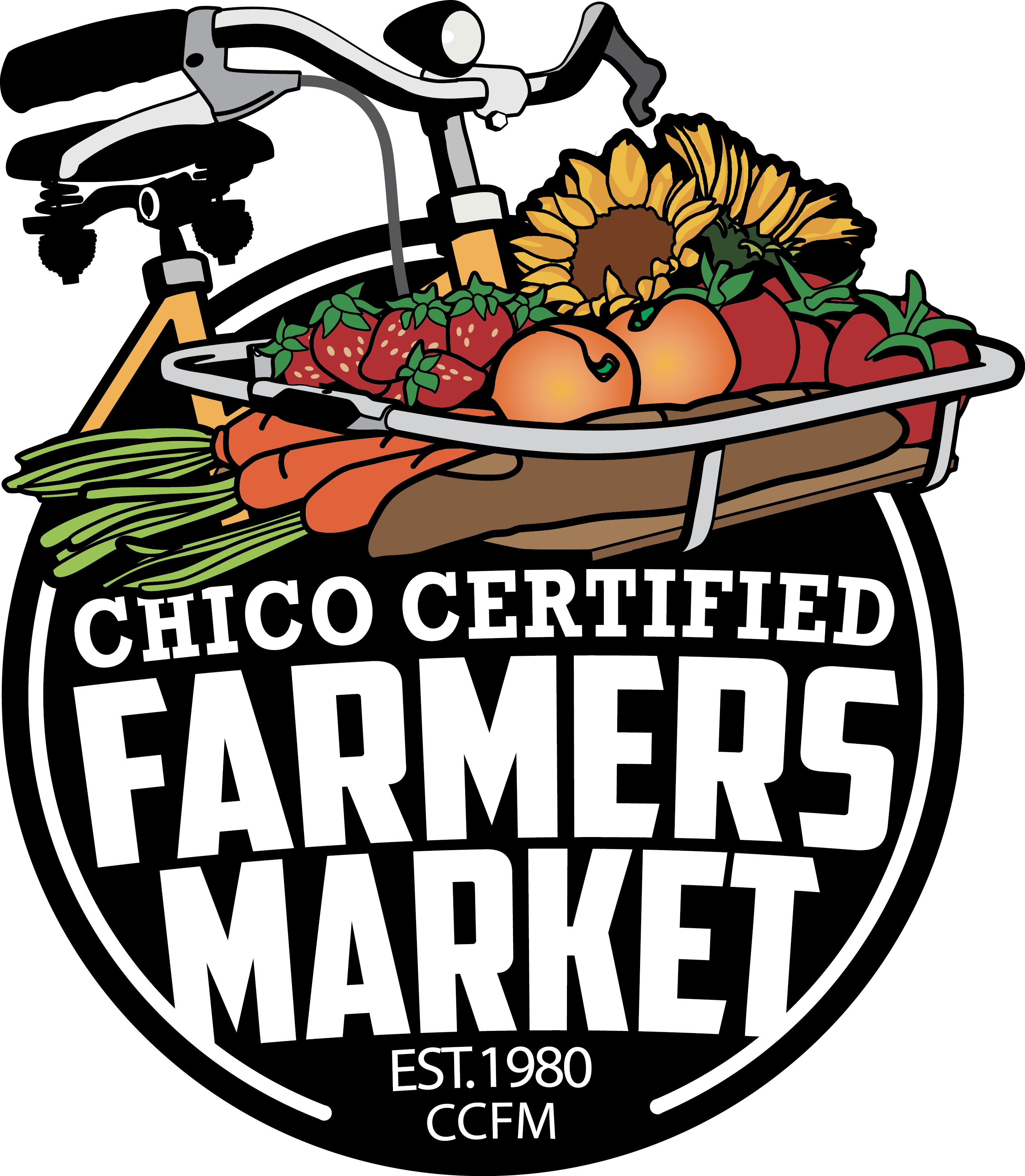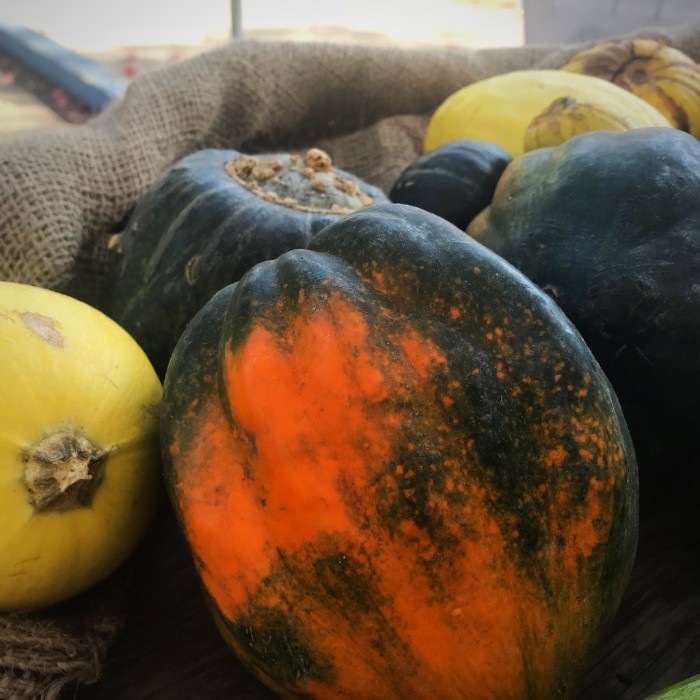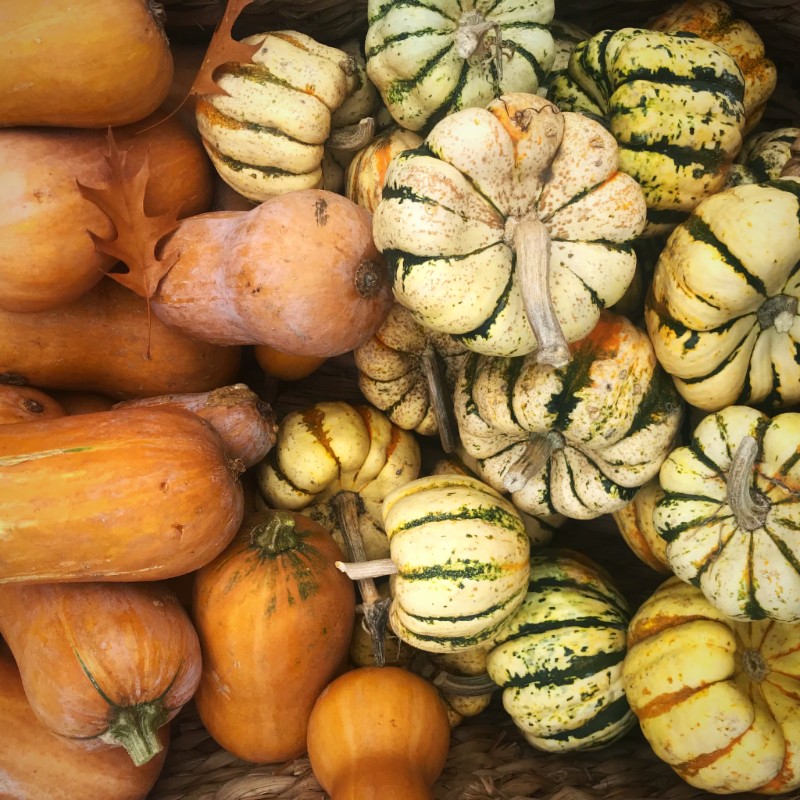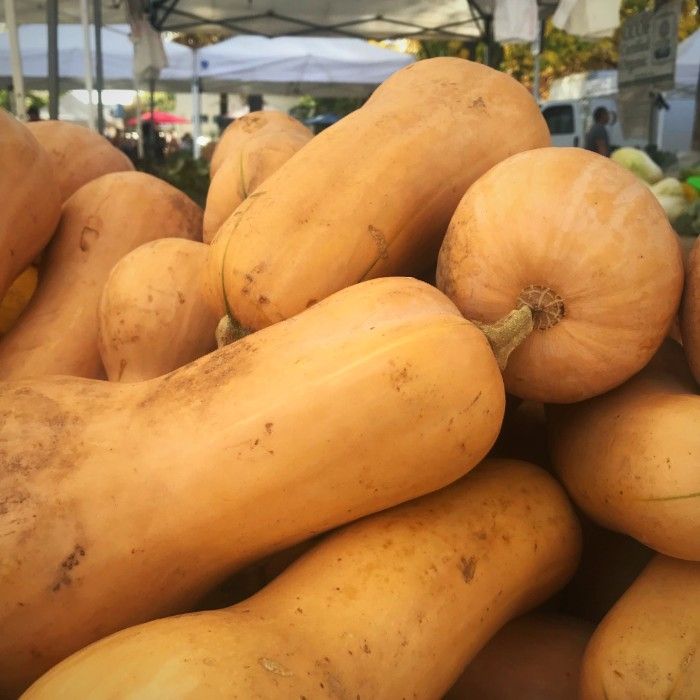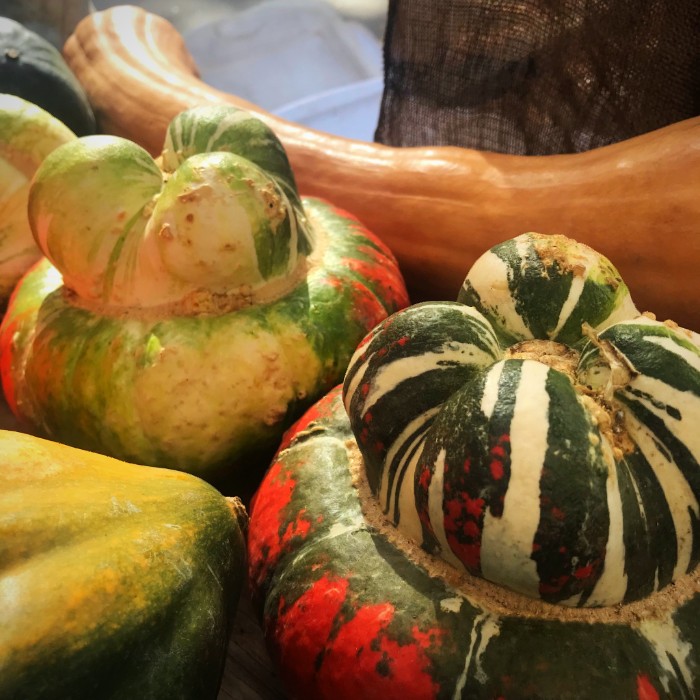It’s true! The first winter squash have arrived at the Chico Certified Farmers’ Market, reminding us that even cooler nights are approaching and autumn is thriving. Oddly enough, the term “winter squash” is a bit misleading, as most are harvested during the fall but are hardy enough to last all winter, hence the name. Winter squash are denser, firmer, and generally more sweet than their summer counterparts. They are packed with nutrients such as vitamin A, magnesium, potassium, and manganese while being naturally low in fat and calories! Plus they are just so tasty and comforting on a cold day.
To pick the perfect one, look for an intact stem. While bumps and discoloration on the skin are fine, you don’t want to see soft spots, bruises, or mold. Look for a feeling of being a bit heavy for its size and keep in mind that hollow squashes, like pumpkins, can look deceivingly large but yield much less flesh than a solid squash of the same size.
Winter squash are incredibly versatile. They can be used in soups, desserts, casseroles, purees, salads, quesadillas, you name it! They’re even tasty just roasted with a bit of olive oil, salt, and pepper. It’s time for our yearly Winter Squash Guide – we’ve included some information to help you get to know some of those brightly colored, oddly shaped varieties you’ll be seeing while strolling the market aisles!
- de979430 dd83 426b 9462 204b1e7f10a5
- 19169572 fbf7 4160 9b5b 5bfa5338ad30
Acorn Squash
This squash is named for its acorn-like shape and is one of the sweetest varieties. Choose one with a dull green rind; an acorn squash that’s turned orange will have tough and fibrous flesh. The small acorn squash can keep for one or two months, thanks to its thick skin. This makes it tough to peel, but the skin will easily separate from the flesh after cooking. You can cook it skin-on, whether halved and grilled, cut into wedges and roasted, or stuffed and baked.
Kabocha Squash
This squat, round squash has dark green skin (sometimes lumpy) and bright orange-yellow flesh. It tends to be earthy, nutty, and a bit sweet. The texture is similar to a pumpkin.
Red Kabocha
The Red Kabocha is similar in shape but (you guessed it!) reddish-orange with faint white stripes, and is much sweeter. Kabocha is also the traditional choice of squash for tempura squash. Kabocha is the Japanese word for squash! Try these in a risotto or curry!
- e190cf97 68d9 4fdf 8bce 6a6f6252dde3
- 8be04d41 b668 488d a13d 1a4af2971d2a
- 5f713b3b e0a2 48ae a7af 8b1a7ccf4aef
Butternut
A crowd favorite: The bell (or pear) shaped butternut squash. This squash has a bright orangish-yellow flesh underneath a hard, cream colored exterior. It has a long neck and a bulbous bottom. It is considered one of the sweetest of the winter squash varieties and is great in purees, soups, or simply sauteed or roasted. Once you peel or cut away the tough skin, the insides are oh-so worth it!
Delicata Squash
Also called a sweet potato squash, this guy looks the closest to its summer relatives. Similar to summer squash, the skin is more easily bruised, but is also edible. It is oblong with a skin that ranges from cream to yellow with green stripes. When cooked, the consistency resembles a soft sweet potato (aha!), but a bit more mild and a bit less sweet. Bake, steam, or stuff this one after scooping out the seeds!
Sweet Dumpling Squash
This whitish-yellow and green squash is small and compact, making the whole squash the perfect-size bowl for an individual serving. The flesh tastes very much like sweet potato, and the skin is edible is as well. Use sweet dumpling squash in recipes calling for sweet potato or pumpkin.
- 773c6464 058b 47a8 b870 915694dc67f2
- d5eac97c e9a9 48fc a953 1c4cefe7d3d9
- a2543499 080e 41e8 9aa6 f1b9c2c46c3f
Red Kuri Squash
You certainly can’t miss this dramatic bright beauty on the stands! Also sometimes called a Hokkaido, the bright pinkish-red skin is edible, as is its chestnut, buttery-flavored yellow flesh. It looks a bit like a tear drop shaped pumpkin, without ridges. If you’re looking for a silky alternative to butternut squash soup, try a Red Kuri!
Buttercup Squash
Not to be confused with a butterNUT squash, the butterCUP squash is compact and round with a dark green rind. They can look similar to a Kabocha, except for a circular ridge on their bottom that gives them away. They have firm and dense orange flesh that is very sweet, but can also be dry when cooked. This variety is best steamed or baked.
Hubbard Squash
With skin ranging from orange to green, gray or blue, Hubbard Squash is one of the largest varieties of winter squash. They are usually very large, covered in lumps and bumps, and taste like a sweet pumpkin. This squash is great for baking – especially as pie filling!
Turban Squash
Similar in flavor to the buttercup, the turban or Turk’s cap squash is visually striking. It typically has a broad, deep-orange bottom and a smaller top knot with colorful streaks of orange, as well as white, yellow, or pine-green. Delicate and nutty, the turban squash keeps for two or three months, and is best baked or steamed.
